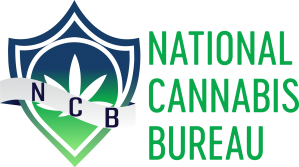According to a study published in the Harm Reduction Journal, a growing number of Canadian consumers have transitioned to the legal cannabis market over the country’s first three years of cannabis legalization, with legal sourcing highest for drinks and oils and lowest for solid concentrates and hash.
One goal of the Canadian Cannabis Act was transitioning customers to the legal market, essential to ensure other aims of protecting public health as regulations initiated product standards, labeling, and age-verification checks.
Investigators from the University of Waterloo School of Public Health surveyed more than 15,000 Canadian cannabis consumers about where they obtain their products, evaluating data from years 2019 to 2021. The data covers the majority of Canada’s first three years of cannabis legalization, as licensing for retail sales first began in October 2018.
Steady Shift Since Legal Launch
According to a 2021 study published in the International Journal of Drug Policy, legal recreational products’ share of Canada’s overall cannabis consumption started at 7.8% in October 2018 and grew to 23.7% by September 2019, with a hefty variance depending on the province. During that first year, only dried flower and some cannabis oils were available for legal purchase, and other products like edibles, topicals, and extracts were made available at retail locations starting in December 2019.
“After the expansion of legal sales to include non-flower products, it is important to examine whether consumers are using the legal market to source all their edibles, topicals, and extracts, as well as dried flower,” the authors state.
Data from the International Cannabis Policy Study were collected via self-completed web-based surveys in September-October 2019, 2020, and 2021 from respondents aged 15 to 65. Respondents were asked, “Overall, about what percentage (%) of the [products] that you used in the past 12 months came from LEGAL/AUTHORIZED sources?” They were able to enter a numerical value between 0 and 100, with responses categorized into “All” (100%), “Some” (1-99%) and “None” (0%).
All products saw a year-over-year increase for respondents reporting “all” their products were sourced legally, with solid concentrates, hash, and dried flower ranking the lowest and oral oil capsules, oral oil drops, and drinks as most likely to be sourced legally. As of 2021, 54.3% of dried flower purchases were from legal retail locations.
Variables Contributing to Canadian Market Sourcing
The study also looked at consumers’ frequency of use, finding that frequent consumers had higher odds of sourcing “some” of their products from the legal market versus occasional consumers. This was counter to the researchers’ hypothesis, believing that frequent consumers would be less likely to source legally due to “poorer perceptions of legal cannabis.”
The authors cite the variance in legal sourcing depending on product, with about half of solid concentrate consumers purchasing “all” products legally to 82% of cannabis drink consumers. The high rates of legal sourcing for drinks may be because they are newer products that are less accessible in illegal markets.
They add that products typically perceived as “medical products,” like oral oils and capsules, similarly saw more consumers purchasing “all” products legally. They also point to consumers of “medical” products potentially holding a higher priority for legal products where quality is regulated, tested, and standardized to guarantee a better, more consistent dose.
Examining provincial differences, the authors cite that all provinces were more likely to source “all” their edibles legally than those in Québec, citing that it is the only province that restricts edible products that may appeal to youth, removing some of the most popular edible formats like candy and chocolate.
Conversely, dried flower consumers in Québec were more likely to purchase “all” their dried flower legally over British Columbia and Ontario, citing Québec as boasting some of the lowest dried flower prices since legalization, potentially making it more desirable than purchasing illegal dried flower compared to other provinces.
The Need for Further Monitoring
“Legal sourcing of cannabis was greater in 2021 than 2020 for all ten cannabis products [surveyed]. In 2021, the percentage of consumers sourcing all their products legally in the past 12 months ranged from 49 percent of solid concentrate consumers in 2021 to 82 percent of cannabis drink consumers,” investigators reported.
Investigators pointed to the need for future studies to continue to examine cannabis product sourcing in Canada over time, along with exploring other ways to displace the illegal market for all cannabis products “without also promoting the use of high-potency cannabis products.”
They also called for further research to examine how product consumption varies across provinces and whether these habits occur in response to price and availability from legal sources.
The post Growing Number of Canadian Weed Consumers Source Products Legally appeared first on High Times.

